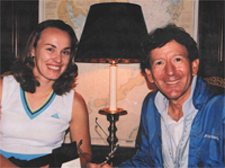Pat Cash on the Volley
Part 1
Interviewed by Paul Fein 2017
Jim Courier put it this way. "Pat Cash is such a beautiful volleyer. If he gets his hands on anything at the net, then it seems the point's over."
History
Spencer Gore, a well-to-do businessman and avid cricketer, won the inaugural Wimbledon in 1877 by boldly rushing the net and volleying. Some thought this effective tactic so unsporting they tried to ban it. Fortunately, better judgment prevailed. Ever since, the volley has proved a major stroke in the arsenal of attacking players.
Nothing is more satisfying and fun in tennis than setting up a point and finishing off your opponent with a decisive volley. This century Roger Federer, Rafael Nadal, and Justine Henin have exemplified that with groundstrokes and volleys. And before them, Roy Emerson, Margaret Court, Billie Jean King, Martina Navratilova, John McEnroe, and Stefan Edberg served and volleyed artfully.
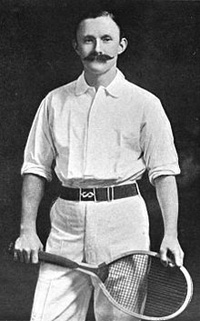
These champions have thrilled us with lunging and leaping volleys that shoot like a laser or float like a feather—directed diabolically so that their foes cannot reach them. How do they volley so skillfully against world-class passing shots and serve returns?
I asked 1987 Wimbledon champion Pat Cash, now a renowned coach, to explain the fundamentals and fine points of the most exciting shot in tennis. Whether you're a tournament competitor, a social player, or an avid spectator, Cash's volley expertise will help you enjoy the sport more.
What do all the great volleyers in tennis history have in common?
All the best volleyers in the world have been great athletes. If you look back to Margaret Court, Rod Laver, and John McEnroe, and more recently, to Pete Sampras, Pat Rafter, and Roger Federer, they are all extremely quick. They are able to get to the ball early and balanced, and more importantly, get back into position for the next volley or overhead.
Laver has often said that great volleys require excellent footwork and the ability to get into position quickly. He believes he became a great volleyer around the time he worked extra hard on his speed, agility, and strength.
Why is the Continental grip the best grip for volleying?
It's the most useful grip for volleys because the net player has less time to prepare and get into position. So a ‘one grip fits all' is handy under fire and the most practical.
However, in theory, a high volley would be more efficient with a grip facing down to the court much like you would have if you hit a high groundstroke. The reverse can be said for the low volley where a move to open the racket face with a grip change would work. It's the same as using the angle of the golf club face which does the work for the golfer. For example, an open-faced sand wedge to chip high over a bunker would be similar to a low volley over the high net with an open-faced grip change.
Making a grip change and keeping the same arm and wrist movement through the ball prevents risky wrist movements. We see that problem so often with amateurs or juniors, especially on the forehand when they use a grip edging to the forehand side.
What volley grip do you use?
I use a variety of grips when I have enough time. When I need to hit a sharply angled crosscourt forehand volley, I open the racket face, using a grip more toward the backhand. That helps me get a lot of cut around the side of the ball.
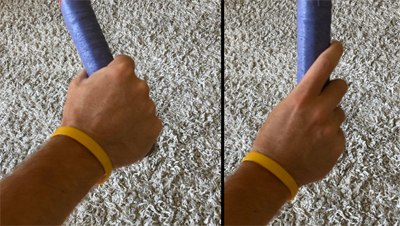
Using the same grip for all volleys is one of those coaching myths that have been around for decades. For a low or high groundstroke, it makes sense to change your volley grip when it's appropriate.
This grip change is also very easy to learn. It's just usually not recommended because of the very short reaction time you have at the net, but it's biomechanically sounder.
Swing volleys are the new normal for some players, especially girls and women. Should they keep their forehand or backhand grip for drive volleys following a groundstroke approach shot, or switch it to the Continental grip?
This is a classic case where keeping your groundstroke grip works perfectly when you're approaching the net. Of course, it depends on the height of the ball, but the drive volley is typically hit shoulder height or above the shoulder. I see no need to switch to the Continental grip until after the drive volley is hit and you take your position at the net.
Doug MacCurdy, the respected International Tennis Federation clinician, said, "With light equipment of today, you can learn to volley when you are seven years old." Considering that better athletes and lesser athletes have different abilities, what is the best age or age range for each of these two groups to start learning the volley?
In tennis, we have to learn all the skills for every shot, and this is why tennis is the toughest sport to master in the world. The earlier we can start learning all the techniques, the better.
It doesn't mean we have to play for hours on end at the age of seven or eight. But because the volley is one of the easiest things to learn technically, I see no reason why it shouldn't be the first shot to learn—rather than an afterthought, as it is so often these days.
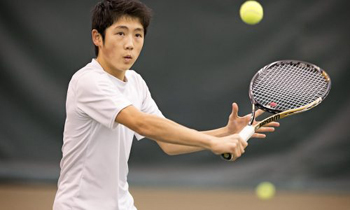
In fact, the most basic and simple hand-eye coordination, throwing and catching a ball to children, is almost a volley technique in itself. You and your young students can bond together, and you can improve their athleticism by spending 10 minutes every day just playing catch.
Should all children under eight years old learn the volley on downsized courts with foam balls, or can more athletic children get started with regulation courts and balls?
The foam balls were introduced so children could play without the ball bouncing over their head. Of course, with the volley, the ball doesn't bounce. That's a perfect reason why the volley could be the first shot to learn. Regulation balls are a little heavy for little hands, but stronger children should be able to hit volleys with standard balls. Downsized courts are especially good for kids to develop confidence at the net.
MacCurdy asserted that 11 to 14 years old is the critical age period to learn and master the volley in order to develop a comfort level at net, and a confidence that will last for the rest of young players' lives. Do you agree?
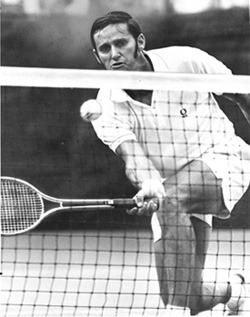
Juniors find it very hard to win at the net when they are small. Every opponent these days has a powerful racket with strings that can produce topspin like the pros, so naturally, they are reluctant to come to the net against that. Whether you are going to be a champion or just a good social player playing some doubles with friends, the volley is a crucial shot to learn.
Last summer I had a chat with the great Roy Emerson. He believes if you haven't learned to volley by the time you're 15, you will never develop the skill to truly master the net. I think that is true for the vast majority of players, though an exception to the rule is Nadal. He was able to develop good technique and a very good volley during his pro career.
However, most pros develop the volley too late, and inevitably, it's their weakest link. That happened to Djokovic, Wawrinka, Nishikori, Thiem, Berdych—the list goes on. Even though most have pretty good technique, they still tend to miss too often at the net. That's because they bypassed an early focus on volley and net development in favor of the baseline game.
According to MacCurdy, junior players and their coaches often give short-term results a higher priority than long-term development. Specifically, he said 80% of practice time is typically devoted to groundstrokes with just 10% on the serve, 5% on the serve return, and 5% on the volley. He contends that juniors should work on serve returns and volleys 50% of the time. What percentages do you recommend for the volley?
Very much depends on your style of play. All the shots need to be worked at with more time devoted to the weaker parts. I believe every child needs to be assessed for the parts of the game they need to improve on, and the percentage of time they need to spend on these weaknesses.
But there is no doubt that the volley is largely neglected on the practice court. When I interviewed Pete Sampras recently, he emphasized the need for juniors and coaches to look longer term so they can become world-class players.
Pete recalled that his coach made him practice volleys even when he didn't want to. Most pros on the circuit—but not the doubles players—spend very little time practicing at the net compared to the groundstrokes, serves, and serve returns. Those practice patterns reflect the type of style they play. Some serve and volleyers like Radek Stepanek and Feliciano Lopez practice a lot at the net.
But even Murray, who doesn't venture to the net much, still practices net play plenty. Generally, very few top 100 singles players use the net successfully, especially among the women who neglect net practice even more.



